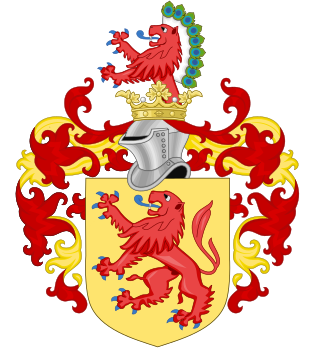
The House of Habsburg, also known as the House of Austria, was one of the most prominent and important dynasties in European history.

The Salian dynasty or Salic dynasty was a dynasty in the High Middle Ages. The dynasty provided four kings of Germany (1024–1125), all of whom went on to be crowned Holy Roman emperors (1027–1125).
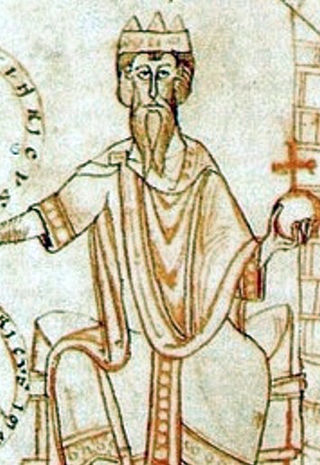
Conrad II, also known as Conrad the Elder and Conrad the Salic, was the emperor of the Holy Roman Empire from 1027 until his death in 1039. The first of a succession of four Salian emperors, who reigned for one century until 1125, Conrad ruled the kingdoms of Germany, Italy and Burgundy.

Rudolf I was the first King of Germany from the House of Habsburg. The first of the count-kings of Germany, he reigned from 1273 until his death in 1291.
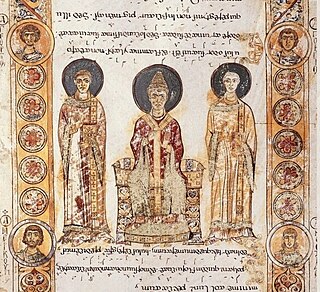
Pope John XIX, born Romanus, was the bishop of Rome and ruler of the Papal States from 1024 to his death. He belonged to the family of the powerful counts of Tusculum, succeeding his brother, Benedict VIII. Papal relations with the Patriarchate of Constantinople soured during John XIX's pontificate. He was a supporter of Emperor Conrad II and patron of the musician Guido of Arezzo.
Duke of Burgundy was a title used by the rulers of the Duchy of Burgundy, from its establishment in 843 to its annexation by the French crown in 1477, and later by members of the House of Habsburg, including Holy Roman Emperors and kings of Spain, who claimed Burgundy proper and ruled the Burgundian Netherlands.

Rudolph III, called the Idle or the Pious, was the king of Burgundy from 993 until his death. He was the last ruler of an independent Kingdom of Burgundy, and the last legitimate male member of the Burgundian line of the Elder House of Welf.

Habsburg Castle is a medieval fortress located in what is now Habsburg, Switzerland, in the canton of Aargau, near the Aar River. At the time of its construction, the location was part of the Duchy of Swabia. Habsburg Castle is the original seat of the House of Habsburg, which became one of the leading imperial and royal dynasties in Europe. It is listed as a Swiss heritage site of national significance.

Muri Abbey was a Benedictine monastery dedicated to Saint Martin of Tours. It flourished for over eight centuries at Muri, in the Canton of Aargau, near Zürich, Switzerland. While the monastery is currently established as Muri-Gries in South Tyrol, the former abbey is now a museum and heritage site of national significance.

Ernest II was Duke of Swabia from 1015 to 1030. A member of the House of Babenberg, he was the son of Ernest I and Gisela of Swabia.

Werner I, Count of Klettgau was a nobleman and an early member of the House of Habsburg. He was an ancestor of King Rudolph I of Germany.

Radbot, Count of Klettgau was Graf (Count) of the county of Klettgau on the High Rhine in Swabia. Radbot was one of the progenitors of the Habsburg dynasty, and he chose to name his fortress Habsburg.
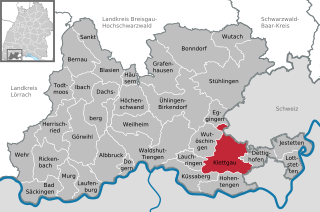
Klettgau is a municipality in the district of Waldshut in Baden-Württemberg, Germany. It is the centre of the Klettgau historical region stretching across the Swiss border into the cantons of Aargau, Schaffhausen and Zürich.

Benno II was Bishop of Osnabrück from 1068 until his death. He served as a close advisor and architect of Emperor Henry IV. In 1080 he founded the Benedictine abbey of Iburg Castle.
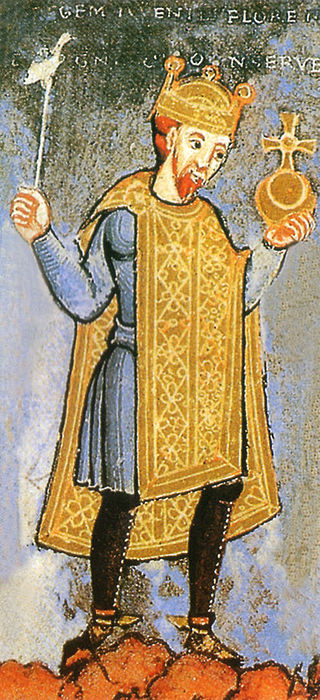
Henry III, called the Black or the Pious, was Holy Roman Emperor from 1046 until his death in 1056. A member of the Salian dynasty, he was the eldest son of Conrad II and Gisela of Swabia.

Guntram the Rich was a count in Breisgau, member of the noble family of the Etichonids, and possibly the progenitor of the House of Habsburg.

Limburg Abbey is a ruined abbey near Bad Dürkheim, at the edge of the Palatinate Forest in Germany. In the 9th century, the Salian Dukes from Worms built a fortress on the Linthberg as their family seat.

The Counts of Lenzburg were a comital family in the Duchy of Swabia in the 11th and 12th centuries, controlling substantial portions of the pagi of Aargau and Zürichgau.
Lanzelin was a Germanic noble and was a distant ancestor of the House of Habsburg. His father, Guntram the Rich, was a powerful nobleman. He married Liutgarda of Nellenburg from whom he inherited part of his possessions in present-day Switzerland, whilst from his father he inherited the titles of Duke of Muri and Count of Sundgau. He also possessed the titles of Duke of Altenburg and Count of Klettgau, and had lands in Alsace.
















